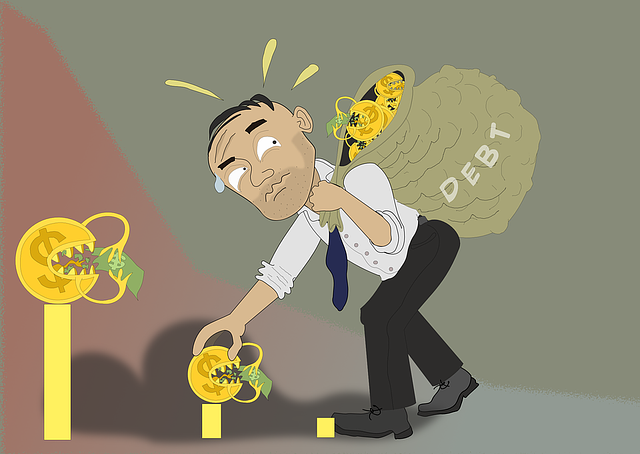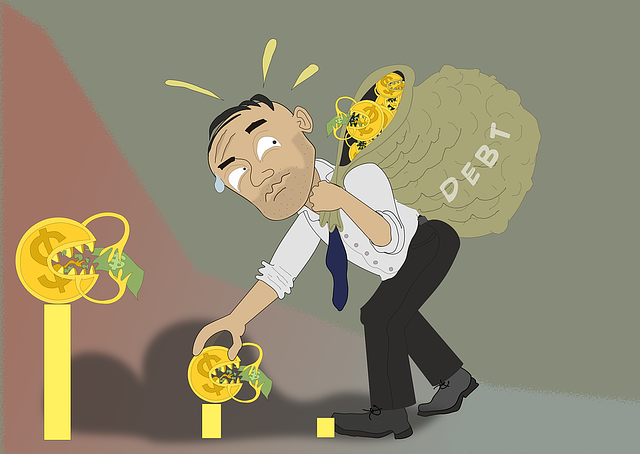Binance vs Coinbase Fees: Which Is Better?
Author: Jameson Richman Expert
Published On: 2025-08-21
Prepared by Jameson Richman and our team of experts with over a decade of experience in cryptocurrency and digital asset analysis. Learn more about us.
When comparing Binance vs Coinbase fees, many traders and investors face a pivotal decision that can significantly influence their overall profitability, trading efficiency, and user experience. Both platforms are industry giants with extensive user bases, but their fee structures, transaction costs, and ancillary charges differ markedly. Having accumulated years of experience navigating the crypto landscape, I’ve interacted with both exchanges, encountered various challenges, and uncovered subtle nuances that can either save traders money or create unnecessary expenses. In this comprehensive article, I’ll share my personal insights, perform an in-depth analysis of their fee models, and highlight crucial factors you should consider to select the platform best suited to your trading style—especially focusing on fee-related aspects.

Understanding Binance and Coinbase Fee Structures
At a fundamental level, Binance and Coinbase operate under distinctly different fee models, which often cause confusion for newcomers and seasoned traders alike. Binance employs a tiered trading fee system based on your 30-day trading volume and Binance Coin (BNB) holdings. This tiered approach incentivizes higher trading activity and BNB ownership by offering progressively lower fees as your volume increases. For example, traders with substantial trading volume can pay as little as 0.02% per trade when paying with BNB, which is highly cost-effective for active traders engaging in frequent transactions.
In contrast, Coinbase’s fee structure is designed for simplicity and transparency, making it accessible for beginners. It typically charges a flat fee that varies depending on transaction size, payment method, and region. This approach simplifies understanding costs but can become expensive for high-frequency or large-volume traders. Coinbase offers two main platforms: the standard Coinbase platform, geared towards retail users with higher fees, and Coinbase Pro, which features a tiered fee system similar to Binance’s but often at a higher cost for comparable trading volumes. The choice between these platforms significantly influences overall trading costs and should factor into your decision-making process.
Binance Fees: A Closer Look
From extensive personal experience, Binance’s fee model is notably advantageous for high-volume traders. The standard spot trading fee starts at approximately 0.1%, but this can be reduced to as low as 0.02% for traders who reach higher tiers or opt to pay fees using Binance Coin (BNB). This tiered structure rewards increased trading activity and BNB holdings, with cost savings scaling as your trading volume grows. For instance, a trader executing multiple small trades daily could see cumulative savings surpassing hundreds of dollars per month compared to flat-fee platforms.
Withdrawal fees are another critical component. They vary depending on the cryptocurrency and network congestion. For example, withdrawing Bitcoin (BTC) may incur a higher fee compared to stablecoins like USDT due to differing network demand and transaction complexity. Binance provides transparent, real-time updates to withdrawal fees, enabling traders to plan large transfers effectively, thus avoiding unexpected costs during peak congestion periods. Additionally, Binance often offers fee discounts during promotional events, trading competitions, or when paying with BNB, further reducing costs for active traders.
Furthermore, Binance’s fee structure for futures and derivatives trading involves separate maker-taker fees, which favor liquidity providers (makers). These fees can be as low as 0.02% for makers and 0.04% for takers, making derivatives trading more cost-efficient for users engaged in margin or leverage trading. Understanding these differences allows traders to optimize their strategies across different trading products, minimizing expenses and maximizing leverage benefits. The ability to switch seamlessly between spot, futures, and options trading within Binance’s ecosystem provides additional flexibility to tailor your trading approach while controlling costs.
Coinbase Fees: An Honest Evaluation
In my perspective, Coinbase’s fee structure emphasizes user-friendliness and transparency, but this often results in higher costs—especially for small or infrequent trades. Coinbase charges a spread of approximately 0.5% on cryptocurrency transactions plus additional transaction fees that depend on your payment method, transaction size, and region. For example, purchasing $100 worth of Bitcoin might involve a flat fee around $2.99, which is considerably higher compared to Binance’s percentage-based fee model. While straightforward, this flat fee structure becomes disproportionately expensive for frequent or larger trades.
Coinbase Pro, however, offers a tiered fee system similar to Binance’s, with trading fees decreasing as your monthly trading volume increases—starting at 0.5% for very low volumes and reducing to 0.04% for high-volume traders. Despite this, in my experience, Coinbase Pro’s costs remain higher than Binance’s for similar trading volumes, especially at retail user levels. The primary advantage of Coinbase remains its seamless fiat on-ramp, integrated banking features, and intuitive interface—making it ideal for newcomers or those prioritizing ease of use over cost savings.
It’s also worth noting that Coinbase’s overall fee structure includes a spread plus a separate fee, which can make actual costs less transparent and sometimes more expensive during rapid market movements or periods of high volatility. This opacity can surprise traders, especially when executing trades in volatile markets or during high spread days. In addition, Coinbase’s higher deposit and withdrawal fees for fiat transfers—especially wire transfers—can add to the overall trading costs, making it less ideal for high-volume fiat exchanges.

Impact of Fees on Your Trading Strategy
Over years of trading, I’ve observed how fees can erode profit margins—especially for day traders, arbitrageurs, and high-frequency traders. Higher fees on Coinbase can significantly diminish gains for small, frequent trades, making strategies like scalping less profitable. Conversely, Binance’s tiered, lower fees favor active traders, enabling them to execute multiple trades without excessive cost accumulation. For example, a trader executing dozens of small trades daily might save hundreds of dollars monthly by choosing Binance over Coinbase, especially when factoring in BNB discounts.
It’s essential to consider not just transaction fees but also platform stability, security protocols, liquidity, and the breadth of available cryptocurrencies. Binance offers a broader selection of altcoins and trading pairs, making it ideal for traders seeking diversification and access to emerging tokens. Meanwhile, Coinbase’s reputation for high security standards, regulatory compliance, and user-friendly interface can be advantageous for risk-averse investors or beginners. Balancing these factors against fee considerations is crucial for crafting an effective trading strategy—especially for long-term investors versus short-term traders.
Additionally, trading frequency and volume should dictate your platform choice. If you primarily buy and hold with infrequent trades, Coinbase’s simple fee structure may be acceptable. However, if you are an active trader executing multiple small trades daily, Binance’s lower fees and BNB discounts can significantly improve profitability over time.
Additional Charges and Hidden Costs
Beyond standard trading fees, both exchanges impose withdrawal and deposit charges which can accumulate significantly. Binance’s withdrawal fees are generally transparent and vary with network conditions—network congestion, especially on Bitcoin and Ethereum, can cause fees to spike unexpectedly. Planning large withdrawals during off-peak hours or using stablecoins for transfers can help minimize costs. For example, transferring USDT via the Tron network incurs minimal fees compared to Bitcoin or Ethereum networks.
Coinbase’s withdrawal fees tend to be higher, especially when converting between fiat currencies or transferring to bank accounts via ACH or wire transfers. Wires can incur fees upwards of $25 per transaction, impacting large withdrawals or frequent transfers significantly. Additionally, Coinbase’s currency conversion fees include a spread margin, which inflates costs when trading between non-USD fiat currencies or unfamiliar trading pairs. It’s important to factor these into your overall cost calculations, especially if you are operating internationally or dealing with multiple fiat currencies.
Currency conversion fees and the spread margin can be a hidden cost that erodes your profits, often unnoticed until you review your transaction history. Binance generally offers more competitive rates for currency conversions, supporting a wider range of fiat-to-crypto pairs, making it more flexible for international traders managing multiple currencies.
Referral Programs and Bonuses
Both Binance and Coinbase incentivize users with referral programs that can help offset trading costs or generate passive income. Binance’s referral system offers benefits such as reduced trading fees or bonuses for referred users, which can be particularly valuable if you actively promote the platform or have a network of traders. For example, referring friends can grant you a percentage of their trading fees for a set period, creating an ongoing revenue stream.
Coinbase offers attractive sign-up bonuses—often in the form of Bitcoin or other tokens—upon successful referrals. These bonuses can supplement your holdings without additional trading expenses. Additionally, third-party platforms like MEXC, Bitget, and Bybit also feature lucrative referral programs, expanding your earning potential across multiple exchanges. Leveraging these programs strategically can effectively reduce your overall trading costs and increase your crypto holdings over time.

My Personal Journey and Lessons Learned
From my long-term experience, I initially gravitated toward Coinbase due to its reputation for security, regulatory compliance, and ease of onboarding. However, I quickly recognized that high transaction fees limited my ability to profit from small or frequent trades, especially during volatile market conditions. Transitioning to Binance allowed me to capitalize on their tiered fee structure, significantly reducing costs for high-volume trading. I also learned to pay with BNB when possible to lower fees further and to execute large withdrawals during off-peak network hours to avoid spikes in network fees.
Throughout my journey, I discovered that security protocols, customer support responsiveness, and platform stability vary between exchanges, prompting me to weigh these factors alongside cost savings. Strategies such as diversifying holdings across multiple platforms and staying informed about fee promotions have been crucial in optimizing my trading outcomes. The key lesson was to analyze total costs comprehensively—considering trading, withdrawal, currency conversion, and hidden fees—before executing large or frequent transactions. Staying updated on platform fee changes and leveraging promotional offers can lead to substantial savings over time, especially when paired with strategic transaction timing and platform features.
Conclusion: Which Platform Is Better for You?
Deciding between Binance and Coinbase hinges on your trading volume, frequency, security preferences, and specific needs. For casual or beginner traders, Coinbase’s transparent pricing, easy onboarding, and intuitive interface might suffice, despite higher costs for active trading. Conversely, high-volume or professional traders can benefit from Binance’s tiered, lower fee structure, which can lead to significant savings over the long term. However, don’t overlook other crucial factors such as security standards, supported cryptocurrencies, platform features, customer support quality, and regulatory compliance.
Conduct a thorough cost-benefit analysis tailored to your trading goals, risk appetite, and geographical location. Leveraging both platforms strategically—using Coinbase for fiat onboarding and Binance for high-volume trading—can optimize your overall crypto operations. Remember, the most cost-effective approach is one that balances fees with security and usability tailored to your specific trading style.
By understanding the fee landscape thoroughly, you can craft a more profitable, efficient trading approach—minimizing costs and maximizing gains. This strategic knowledge is vital in today’s competitive crypto environment, where even small differences in fees can have long-term impacts on your portfolio growth.
For additional insights on maximizing your crypto investments or understanding market trends, visit this resource. To explore Bitcoin’s historical price movements, check this link. And for a detailed comparison of Binance and Bybit, see this article.
In conclusion, mastering the fee landscape of Binance vs Coinbase is crucial for optimizing your crypto trading strategies. Evaluate your trading volume, security preferences, and financial goals carefully to choose the platform that aligns best with your needs. Equipped with this knowledge, you can reduce costs, boost profits, and enjoy a more rewarding trading experience.